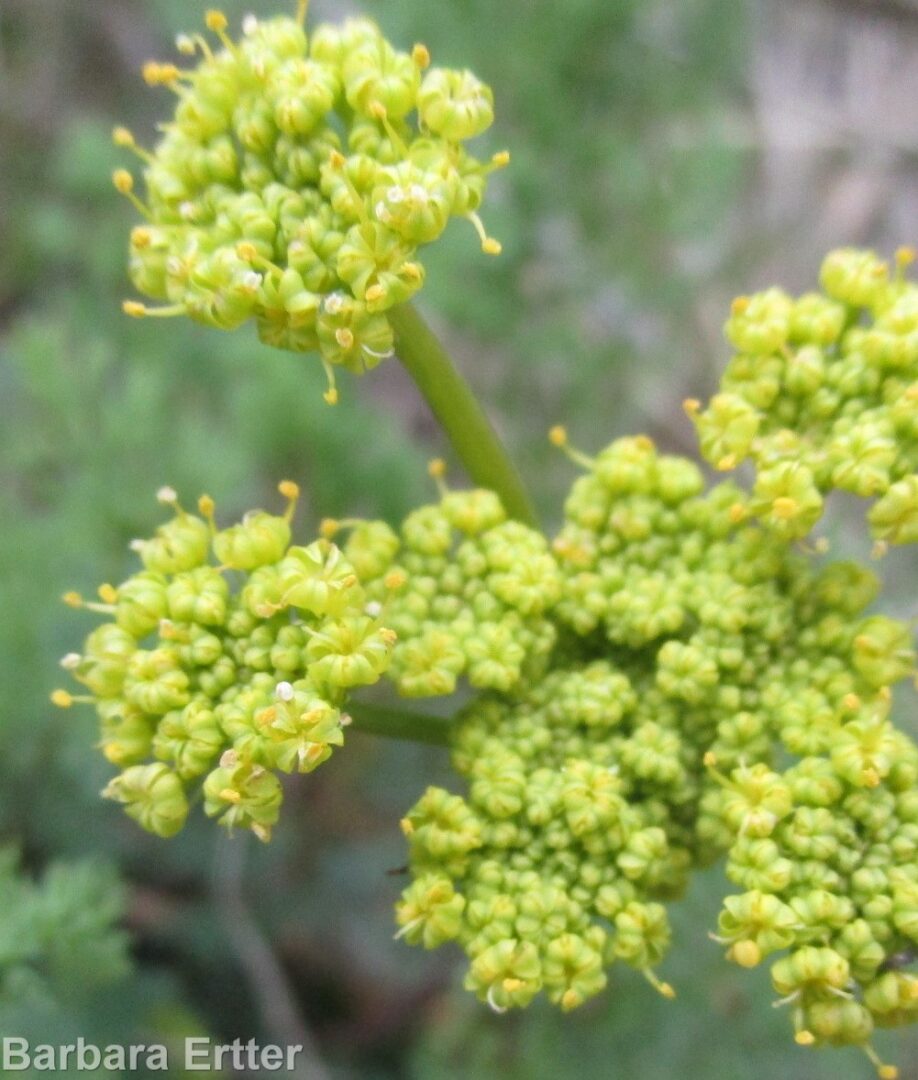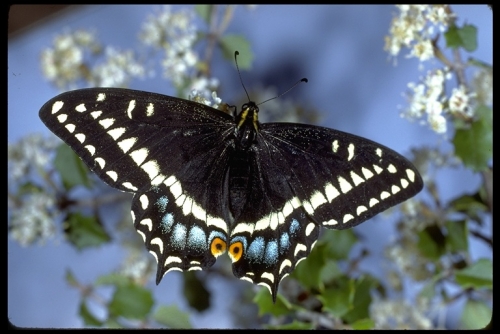(Alt: Lomatium grayi )

native herbaceous
Distribution: Foothills, South Boise, West Valley, Oregon Trail, Mid Elevation
UW Burke Herbarium Link: Lomatium papilioniferum
USDA Plants Link: Lomatium papilioniferum (LOGR)
Wildflower walks along the Boise Front

UW Burke Herbarium Link: Lomatium papilioniferum
USDA Plants Link: Lomatium papilioniferum (LOGR)
This species was included in Gray’s biscuitroot (Lomatium grayi) until 2018, and this is the name under which you’ll find it in most currently available books, websites, and other sources. Lomatium grayi is still a good species, just not the one growing in the Boise Front.
What happened is that an observant researcher, Dr. Wayne Whaley, was studying the food preferences of caterpillars of the Indra swallowtail butterfly (Papilo indra), and he realized that the butterflies were relishing populations of the robust form of Lomatium grayi in the northwestern part of the species’ range while turning their noses up at it elsewhere. Whaley suggested that the butterflies might know something we didn’t, and sure enough, when additional researchers took the cue and a closer look with molecular analysis, they confirmed that “Lomatium grayi” was in fact actually composed of several overtly similar but fundamentally distinct species in different parts of the range.

Since the name-anchoring type specimen of Lomatium grayi belonged to the subset of populations that the butterflies ignored, the ones that they liked needed a new name (or names), even though these were actually more widespread than “typical” L. grayi. The most abundant component, which is the one in the Boise Front, was named Lomatium papilioniferum, meaning “butterfly-bearing”, to acknowledge this intriguing aspect of its distinctiveness. I propose “butterfly biscuitroot” as a common name.
Alexander, J. A., W. Whaley, & N. Blain. 2018. The Lomatium grayi complex (Apiaceae) of the western United States: a taxonomic revision based on morphometric oil composition and larva-host coevolution studies. Journal of the Botanical Research Institute of Texas 12(2): 387-444.